- Home
- John Norman
Savages of Gor Page 11
Savages of Gor Read online
Page 11
Its most notable feature, probably, is its hide sheds. Under the roofs of these open sheds, on platforms, tied in bundles, are thousands of hides. Elsewhere, here and there, about the town, are great heaps of bone and horn, often thirty or more feet in height. These deposits represent the results of the thinnings of kailiauk herds by the red savages. A most common sight in Kailiauk is the coming and going of hide wagons, and wagons for the transport of horn and bones. The number of kailiauk in the Barrens is prodigious, for it affords them a splendid environment with almost no natural enemies. Most kailiauk, I am sure, have never seen a man or a sleen.
The Barrens are traversed by a large number of herds. The four or five best-known herds, such as the Boswell herd, he for whom the Boswell Pass is named, and the Bento herd and the Hogarthe herd, named after the first white men who saw them, number, it is estimated, between two and three million beasts. The tremors in the earth from such a herd can be felt fifty pasangs away. It takes such a herd two to three days to ford a river. It has occasionally happened that enemy tribes have preyed on such a herd at different points and only afterwards, to their chagrin and amusement, realized their proximity to one another. Besides these major herds there are several smaller, identifiable herds numbering in the hundreds of thousands of animals. Beyond these, as would be expected, there are many smaller herds, the very numbers of which are not even calculated by the red savages themselves, herds which often range from a few hundred to several thousand animals.
It is speculated that some of these smaller herds may be subherds of larger herds, separating from the major herd at certain points during the season, depending on such conditions as forage and water. If that is the case then the number of kailiauk may not be quite as large as it is sometimes estimated. On the other hand, that their numbers are incredibly abundant is indubitable. These herds, too, interestingly enough, appear to have their annual grazing patterns, usually describing a gigantic oval, seasonally influenced, which covers many thousands of pasangs. These peregrinations, as would be expected, tend to take a herd in and out of the territory of given tribes at given times. The same herd, thus, may be hunted by various tribes without necessitating dangerous departures from their own countries.
The kailiauk is a migratory beast, thusly, but only in a rather special sense. It does not, for example, like certain flocks of birds, venture annually in roughly linear paths from the north to the south, and from the south to the north, covering thousands of pasangs in a series of orthogonal alternations. The kailiauk must feed as it moves, and it is simply too slow for this type of migration. It could not cover the distances involved in the times that would be necessary. Accordingly the herds tend not so much to migrate with the seasons as to drift with them, the ovoid grazing patterns tending to bend northward in the summer and southward in the winter. The smell of the hide sheds, incidentally, gives a very special aroma to the atmosphere of Kailiauk. After one has been there for a few hours, however, the odor of the hides, now familiar and pervasive, tends to be dismissed from consciousness.
"Some of them are quite pretty," said the fellow next to me, looking down into the pit, his elbows on the railing.
"Yes," I said. We stood within the compound of Ram Seibar, a dealer in slaves. It is a very large compound, probably because he also handles kaiila, and there must be running space for such active, agile creatures. It is, I would estimate, something over six hundred feet square, perhaps more, perhaps even six hundred and forty or six hundred and fifty feet square. It contains several slave pits but only three were now occupied. There are stables there, as well, four I think, and some large, open pens, for kaiila. Whereas the slave pits are open, and thus exposed to the weather, there is also a long, low stable for female slaves. Adjoining it there is a barred, roofed pen, or exercise yard, as well. Female slaves in a slaver's holding are usually exercised nude and under the supervision of a slaver's man, who bears a whip. The slave pits, as the men may look down upon the girls, might serve, I supposed, much the same purpose as the pre-sale exhibition cages in more urbanized areas. I had gathered, on the other hand, that much of the best merchandise was not exposed in the pits, but was in the stable or in the nearby sales barn. It must indeed be fine stuff, I thought, if it were superior to the girls in the pits for several were extraordinarily attractive. It is not surprising, of course, that the quality of beauty in barbarian slaves brought to Gor is quite high. If they were not beautiful there would be little point in bringing them to Gor. Who would buy them? The compound also contained several larger and smaller wooden structures, primarily holding and storage areas, barracks for men and various ancillary buildings, a cook house, smithy, discipline shack, and such. The entire compound is enclosed by a wooden palisade. On the largest building, the sales barn, about seventy feet wide and a hundred and twenty feet in length, there flies the pennon of Ram Seibar, a yellow pennon on which, in black, are portrayed shackles and a whip.
"Do you know Grunt, the trader?" I asked the fellow.
"Yes," said he.
"Is he in the vicinity?" I asked.
"I do not know," said the man.
I had sought this fellow in the various inns and taverns of Kailiauk. I could find no one who seemed to know of his whereabouts. Indeed, I had begun to despair of finding him. This morning, at the Five Horns stables, in Kailiauk, I had bought two kaiila. Bridles, a saddle, various sorts of gear, supplies, and trading goods, too, I had purchased in the town, at the store of Publius Crassus, of the Merchants, who is also Kailiauk's Administrator. Too I had purchased a short bow, modeled on the sort used by the savages, fit for clearing the saddle, and a quiver of twenty sheaf arrows.
In my opinion one of the mistakes of the white cavalries of the perimeter areas was their reliance on the crossbow, which is primarily an infantry weapon. It does, of course, have various advantages. It has considerable striking power, it may be kept ready to fire almost indefinitely, and, for most men, it is easier to fire with accuracy from the saddle than the straight bow. It will also, at short ranges, penetrate most of the hide shields used by the red savages.
Its major disadvantage is its slowness in rate of fire. The cavalry crossbow does have an iron stirrup in which the rider, without dismounting, may insert his foot, thus gaining the leverage necessary for drawing the cable back with both hands. If the rider is right handed he usually inserts his right foot in the stirrup and leans to the right in drawing the cable; this procedure is reversed, of course, usually, if the rider is left handed. While this procedure permits the rider to reload without dismounting and tends to improve, at some cost to striking power, the bow's rate of fire, it still provides, in my opinion, no adequate compensation for the loss of rapidity of fire. I think it not unlikely that the red savage could discharge three to five shafts in the time a single quarrel could be set in the clumsier weapon. In my opinion, if the crossbow, of the lighter, more quickly loading type, had proved to be a superior missile weapon in the typical combats practiced in the Barrens the red savages would have had recourse either to it, or to something analogous to it. But they have not.
I opted, accordingly, taking them for my authorities in the matter, for a weapon similar in design to theirs, one which had, apparently, proven its usefulness in the abrupt, sudden and fierce engagements characteristic of war on the vast grasslands of the Barrens. Unable to find Grunt, I feared I must enter the Barrens alone. Already, early this morning, the Lady Mira of Venna, and Alfred of Port Olni, with their mercenaries, had left Kailiauk.
The fellow leaning on the rail turned to look at me. "Why do you wish to find Grunt?" he asked.
"I wish to enter the Barrens," I said.
"It is madness to do so," said he.
I shrugged.
"It is unfortunate you did not come to Kailiauk a month ago," he said.
"Why is that?" I asked.
"Settlers, armed, with two hundred wagons, crossed the Ihanke," he said. "Men, women, children. There must have been seven or eight hundred of them
. You could have accompanied them. There is perhaps safety in such numbers."
"Perhaps," I said. Such a party, however, I knew must travel slowly. Also, it would be impossible to conceal its trails and movements.
"You are a big fellow," he said, "and seem quick, and strong. Why did you not sign articles with the troops who left this morning?"
I did not respond to him.
"It was the largest mercenary band ever to leave Kailiauk," he said. "You should have gone with them."
"Perhaps," I said.
"I'm chained! I'm chained!" wept one of the girls in the pit below. She knelt, nude, in the mud. With her small hands, her tiny wrists in their close-fitting manacles, she seized the chain attached to the collar on her neck. She jerked it twice against the back of her neck. It cut at the back of her neck. "I'm chained," she wept, disbelievingly. "Where am I? What has become of me? Where are my clothes? Who are these men? How is it that they dare to look at me? In what place do I find myself?"
"They cannot even speak Gorean," said the man beside me.
"Barbarians," I said.
"Yes," he said. The girl had spoken in English. This had confirmed my surmise as to their origin. I had come to Seibar's market out of curiosity. I had heard he was the major dealer in Kailiauk for barbarian slaves. I did not know, but I suspected that he himself was not in league with Kurii, but merely purchased wholesale lots of such girls from one or more of their agents. Such girls, I gathered, from my conversations with the teamster with whom I had ridden to Fort Haskins, were sold at various points along the perimeter. I had, earlier in the afternoon, on one of my purchased kaiila, scouted the terrain north and south of Kailiauk. In my ride I had come to one place, sheltered among small hills, in which I had found scorched grass and several, rounded six-inch-deep impressions in the earth. It had been there, I speculated, that one of the steel ships of the Kurii had landed. Also there were wagon tracks leading away from the area, toward Kailiauk. I was less fortunate, at various small camps and outlying farms, in obtaining information as to the possible whereabouts of a white trader named Grunt. I did not approach the Ihanke, nor did I wish to do so, if possible, until I knew exactly what I was doing. I did not know, for example, even if it were guarded or not.
"Even if such girls understood Gorean," said the fellow next to me, amused, "they could probably not even understand what was required of them. They probably do not even know the hundred kisses."
"They could be taught," I said.
"That is so," he laughed.
"Stand aside, Gentlemen, if you would," said a voice near us, that of a slaver's man.
We stepped back and he, from a basket, hurled an assortment of scraps, such as crusts of bread and rinds of fruit, into the muddy pit. It was the refuse, the garbage, I gathered, from a meal of the slaver's men.
In the pit the girls regarded the refuse with horror. Then I saw the small, chained hand of one reach forth toward a piece of roll. She picked it up and thrust it in her mouth. Another girl then reached to a bit of fruit. Another then snatched at a gravy-sopped wedge of yellow Sa-Tarna bread. Then, in an instant, in their chains, they scrambled in the mud after the garbage, twisting and shrieking, caught and restricted in their chains, scratching, and rolling and fighting, for the least of the tidbits cast to them by a free man.
"They are slaves," said the man near me, as we returned to the railing.
"Yes," I said. Too, I saw that their education had begun.
"There is better stock inside, I hear," said the man, "hidden away until the time of the sale, some even in the barbarian garments in which they were captured."
"That is interesting," I said.
"But they, too," said the man, "will learn to take food on their belly."
"Of course," I said. Then I turned away from the railing. I was angry that I had not been able to locate Grunt, the trader. In the morning, with or without him, I would enter the Barrens.
7
Ginger
"Barbarians! Barbarians for sale!" called the fellow, standing on the circular wooden platform, outside the opened gate of the large, palisaded enclosure.
I saw a nude woman, her hands tied behind her back, being dragged forth, each arm in the charge of a slaver's man.
"Barbarians for sale!" called the fellow on the platform. He was a gross, corpulent fellow, and wore a long, opened, soiled shirt of blue-and-yellow silk. His leather trousers were fastened with a wide, triply buckled belt. To this belt was fastened a substantial, beaded sheath, apparently containing a stout, triangular-bladed dagger. He wore, too, kaiila boots, with belled, silver heel points, kaiila goads. In his hand there was a long, supple kaiila quirt of black leather, about a yard in length. His hair was bound back with strands of twisted, blue-and-yellow cloth. His caste, even in the town of Kailiauk, was that of the slavers.
The woman, her hands tied behind her, each arm in the rude grasp of a slaver's man, was thrust to the height of the platform, beside the corpulent fellow.
"In addition to our usual stock of fine merchandise," called the corpulent fellow, "we have just received a new lot of barbarians!"
These would be the same girls of whom I had seen several this afternoon, in the slave pits within the compound. I had come again, in the evening, after supper, to the compound of Ram Seibar. I thought I might look in on some of the sales. Afterwards I might go to a tavern, to have a cup of paga and see if I could rent a girl to take to my room for the night, to return her in the morning.
"They have not yet been picked over," said the man. "This little plum, juicy with pleasures for a master," he said, indicating the girl on the platform with him, with a gesture of his kaiila quirt, "is one of the sorriest of the lot." This, in my opinion, was not true. I thought she would have ranked rather high among the girls. To be sure, the most luscious merchandise, presumably to be sold rather late in the evening, I had gathered, had not even been put in the pits.
"Display her, Lads," said the fellow. The two slaver's men thrust the woman forward, toward the crowd, and bent her backwards. She whimpered.
"And this is one of the worst of the lot," said the fellow. The two slaver's men turned the woman first to one side, and then to the other. "Meat so fresh that it has not yet even been marked!" said the fellow. "That is enough, Lads," he said. They then turned the woman about and dragged her down the steps and back into the compound. "If you would see more," said the man to those of us gathered about, about the outdoor platform, "you must come within. Within you may buy her, and others like her, from the side blocks. Too, even more luscious merchandise you may seek from the central block in open bidding!" I wondered if the woman knew that she was, in all likelihood, to be soon branded. In most Gorean cities it is illegal to offer an unbranded woman in a public sale. This is presumably in deference to the delicacy and sensibilities of free women. The brand draws a cataclysmic gulf between the Gorean free woman, secure in her arrogance, beauty and caste rights, and the stripped, nameless, rightless slaves, suitably vended as the mere lovely beasts they are in the flesh markets of this primitive, gorgeous world. Unbranded women, of course, may be sold privately, for example, as fresh captures to slavers or, say, to men who have speculated that they might find them of interest.
"Barbarians! Barbarians for sale!" now continued to call the fellow on the wooden platform outside the gate to the compound of Ram Seibar. "In addition to our usual stocks of fine merchandise, we have just received a new lot of barbarians. They have not yet been picked over. They will be put up for sale within the Ahn. Step within, Noble Gentlemen, and examine our offerings. Patronize the house of Ram Seibar! Free drinks! No purchase necessary!"
I felt a small tugging at my sleeve, and then felt my arm delicately held. I felt a soft cheek pressed against my arm. "Master," whispered a voice. I looked down, and the girl, with loose, auburn hair, looked up. She smiled. "Accompany me to Randolph's tavern," she said. "I will give you much pleasure." About her throat, narrow, sturdy and closely fitting, was a st
eel collar. I stepped back, that I might see her better. She wore a short, fringed, beaded shirtdress. This came high on her thighs. It was split to her waist, well revealing the sweetness and loveliness of her breasts. It was belted upon her with a doubly looped, tightly knotted rawhide string. Such a string is more than sufficient, in its length, and in its strength and toughness, to tie a woman in a number of ways. She was barefoot. About her left ankle there was, about two inches high, a beaded cuff, or anklet. Her garb was doubtless intended to suggest the distinctive, humiliating and scandalously brief garment in which red savages are sometimes pleased to place their white slaves. One difference, however, must surely be noted. The red savages do not use steel collars. They usually use high, beaded collars, tied together in the front by a rawhide string. Subtle differences in the styles of collars, and in the knots with which they are fastened on the girls' necks, differentiate the tribes. Within a given tribe the beading, in its arrangements and colors, identifies the particular master. This is a common way, incidentally, for warriors to identify various articles which they own.
"It is my hope that Master will find Ginger pleasing," she said.
"Ginger?" I asked.
"Master?" she asked.
"Are you a barbarian?" I asked.
"Once, Master," she whispered. "But I have been trained. I am no longer a stranger to my collar."
"Watch out!" cried a man.
"Oh!" cried the girl. I seized her and pulled her from the place where she stood. Two kaiila thundered past.

 Avengers of Gor
Avengers of Gor Kajira of Gor coc-19
Kajira of Gor coc-19 Mercenaries of Gor coc-21
Mercenaries of Gor coc-21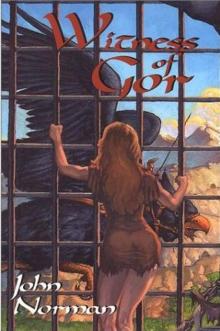 Witness of Gor coc-26
Witness of Gor coc-26 Witness of Gor
Witness of Gor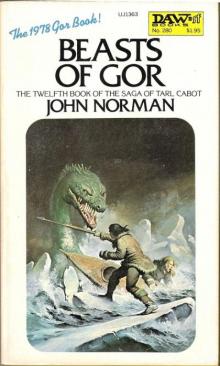 Beasts of Gor coc-12
Beasts of Gor coc-12 Rebels of Gor
Rebels of Gor Mariners of Gor cog[oc-30
Mariners of Gor cog[oc-30 The King th-3
The King th-3 Captive of Gor coc-7
Captive of Gor coc-7 The Captain th-2
The Captain th-2 Vagabonds of Gor coc-24
Vagabonds of Gor coc-24 Explorers of Gor
Explorers of Gor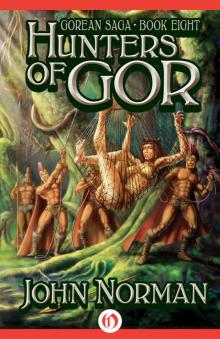 Hunters of Gor
Hunters of Gor The Chieftan th-1
The Chieftan th-1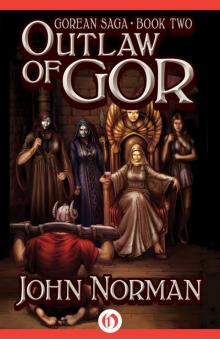 Outlaw of Gor
Outlaw of Gor Priest-Kings of Gor coc-3
Priest-Kings of Gor coc-3 Norman Invasions
Norman Invasions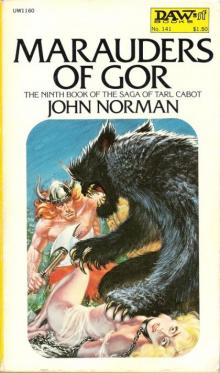 Marauders of Gor coc-9
Marauders of Gor coc-9 Kur of Gor coc-28
Kur of Gor coc-28 Time Slave
Time Slave The Chieftain
The Chieftain Kur of Gor
Kur of Gor Rogue of Gor
Rogue of Gor The Totems of Abydos
The Totems of Abydos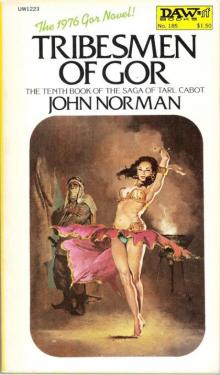 Tribesmen of Gor coc-10
Tribesmen of Gor coc-10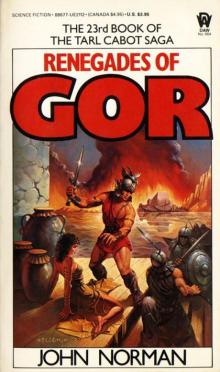 Renegades of Gor coc-23
Renegades of Gor coc-23 The King
The King Tarnsman of Gor
Tarnsman of Gor The Usurper
The Usurper Captive of Gor
Captive of Gor Conspirators of Gor
Conspirators of Gor Smugglers of Gor
Smugglers of Gor Savages of Gor
Savages of Gor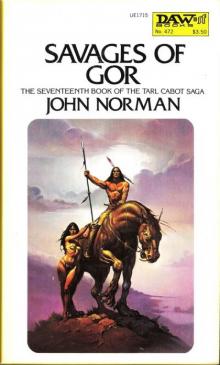 Savages of Gor coc-17
Savages of Gor coc-17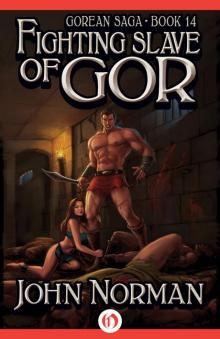 Fighting Slave of Gor
Fighting Slave of Gor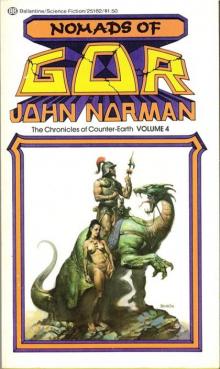 Nomads of Gor coc-4
Nomads of Gor coc-4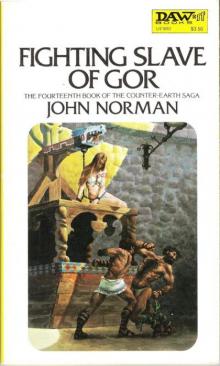 Fighting Slave of Gor coc-14
Fighting Slave of Gor coc-14 Swordsmen of Gor cog[oc-29
Swordsmen of Gor cog[oc-29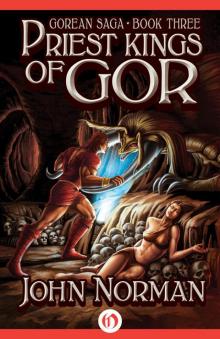 Priest-Kings of Gor
Priest-Kings of Gor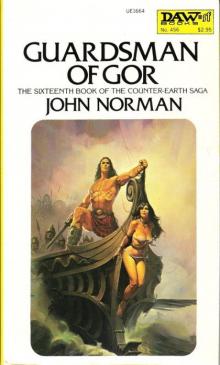 Guardsman of Gor coc-16
Guardsman of Gor coc-16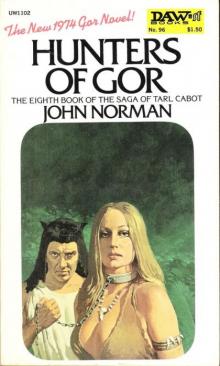 Hunters of Gor coc-8
Hunters of Gor coc-8 Dancer of Gor coc-22
Dancer of Gor coc-22 Prize of Gor coc-27
Prize of Gor coc-27 Conspirators of Gor cog[oc-31
Conspirators of Gor cog[oc-31 Slave Girl of Gor
Slave Girl of Gor Explorers of Gor coc-13
Explorers of Gor coc-13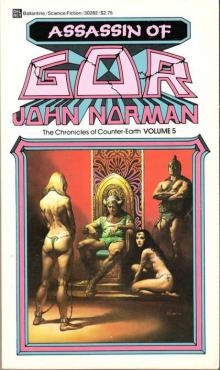 Assassin of Gor coc-5
Assassin of Gor coc-5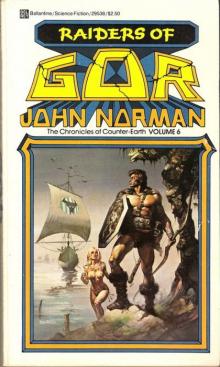 Raiders of Gor coc-6
Raiders of Gor coc-6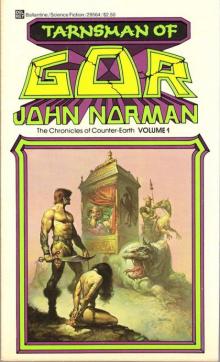 Tarnsman of Gor coc-1
Tarnsman of Gor coc-1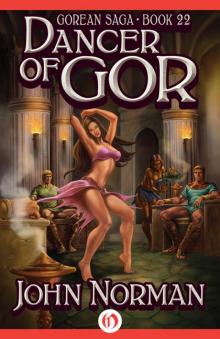 Dancer of Gor
Dancer of Gor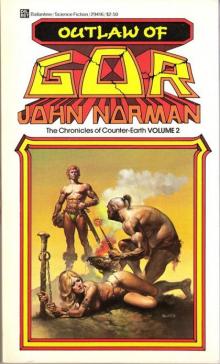 Outlaw of Gor coc-2
Outlaw of Gor coc-2 Guardsman of Gor
Guardsman of Gor Beasts of Gor
Beasts of Gor Ghost Dance
Ghost Dance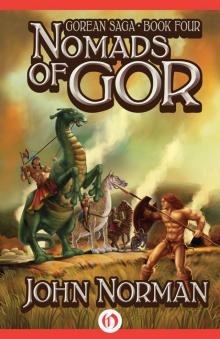 Nomads of Gor
Nomads of Gor Prize of Gor
Prize of Gor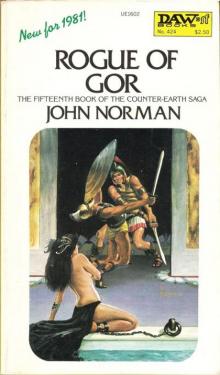 Rogue of Gor coc-15
Rogue of Gor coc-15 Swordsmen of Gor
Swordsmen of Gor